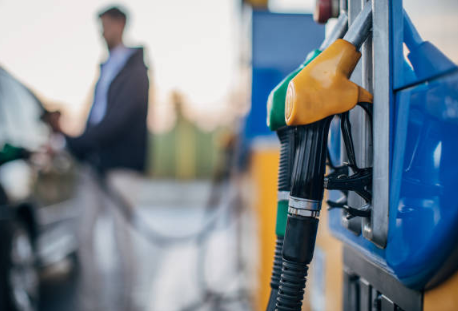As oil prices rise, you may be looking for ways to improve fuel efficiency. By practicing these nine fuel-efficient habits, you can save money, make your car more environmentally friendly, and prevent unnecessary wear and tear on your vehicle. Here’s how to get started.
How to Reduce Your Car’s Fuel Consumption Before Driving
1. Keep your tires properly inflated.
Under-inflated tires have more rolling resistance, which means that the more deflated the tires, the more friction is generated, and the more energy the vehicle needs to expend while driving. This increased drag, in turn, reduces fuel efficiency. To avoid burning too much fuel, consult your car’s owner’s manual to ensure that your tires are always properly inflated.

2. Keep it lightweight.
Whether hauling heavy work supplies or towing a trailer that is no longer in use, transporting heavy loads causes the vehicle to work harder and consume more fuel. In addition to spare tires and emergency tools, be mindful of what you bring when driving. Your credit card will thank you when you refuel.
3. Don’t sit idle for too long.
Waiting for the car to warm up? Or maybe you’re waiting for a friend to get in the passenger seat. In any case, long periods of idle still require the engine to consume a lot of energy, resulting in wasted fuel. If your vehicle is stationary for more than a few minutes, one of the best ways to improve fuel efficiency is to turn off the engine.
4. Adhere to the manufacturer’s recommended maintenance schedule.
Improper adherence to the manufacturer’s recommended maintenance schedule may adversely affect vehicle performance and reduce fuel economy. Proper maintenance of your vehicle is very important, from rotating and aligning your tires when needed to changing the oil regularly. If left unchecked, various faults (e.g. spark plugs) or worn components can lead to increased fuel consumption over time.
How to Reduce Fuel Consumption While Driving
5. Maintain a steady pace as much as possible.
Frequent and drastic speed changes or sustained hard acceleration and braking can cause your vehicle to consume more fuel. On interstates, try taxiing or activating cruise control whenever it’s safe to do so. You also need to practice safe driving habits, such as observing and predicting the behavior of other vehicles and pedestrians on the road. Doing so may help keep your speed steady and prevent burning too much fuel.
6. Drive with the speed limit.
Driving at or below the speed limit on interstates (rather than speeding) may reduce the amount of fuel a vehicle requires. Most cars (sedans, trucks, and SUVs are the same) are more fuel-efficient when traveling at speeds of 55-65 mph or less. Higher speeds tend to make the engine and other components work harder, increasing fuel consumption at a faster rate.
Note: Some vehicles have the option to turn on ECO mode, which may help boost your MPG at certain speeds.

7. Plan your route.
Stop-and-go traffic can really damage your fuel tank and engine. To prevent this from happening, plan your commute route ahead of time to save time and fuel.
- Assess traffic, construction, and accident reports before hitting the road.
- Plan your route in detail, especially if you’re driving long distances.
- Drive on highways and interstates whenever possible to simplify driving and avoid frequent stops.
8. Drive fewer vehicles.
When it comes to learning which driving tips to save fuel, the easiest option may be to drive fewer vehicles. If there is public transportation in your area, choose public transportation or join a carpool. For shorter trips, consider walking or biking to your destination. Getting into the habit of driving less can reduce fuel usage and gasoline consumption (if the vehicle has an internal combustion engine), reduce the amount of air pollutants that enter the ozone layer, and may even lead to a healthier lifestyle if you walk or bike.